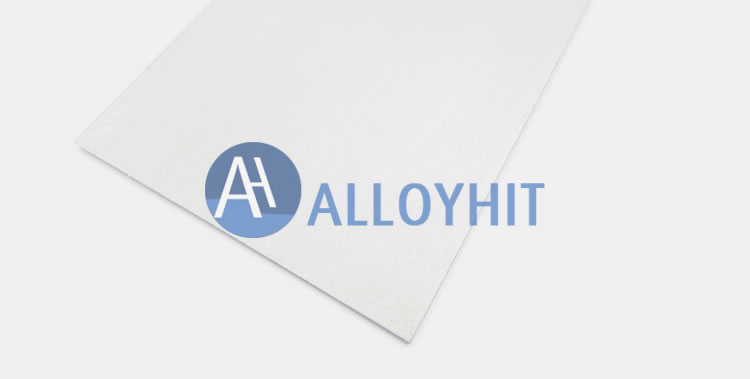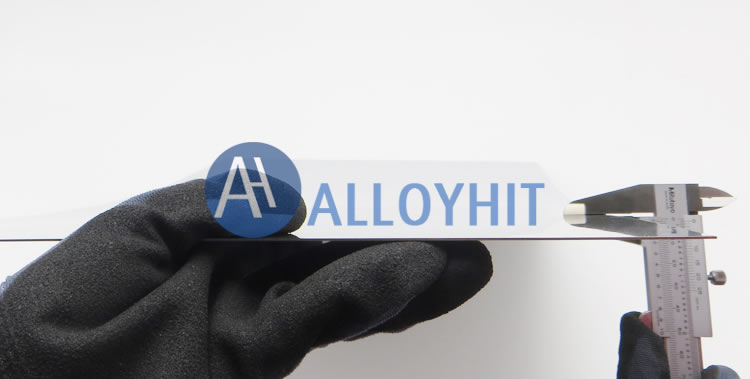
Grade and Standard
| Forms | Grade | Standard |
| Sheet, Strip and Foil | RO5255 | ASTM B708 |
Chemical composition (mass fraction) (≤) %
| O | C | H | N | Nb | W | Mo | Si | Fe | Ti | Ni | Other | Ta | |
| Ta10W | 0.015 | 0.01 | 0.0015 | 0.01 | 0.1 | 9~11 | 0.02 | 0.005 | 0.01 | 0.01 | 0.002 | 0.001 | Balance |
Mechanical properties at room temperature
| Yield Strength/Mpa | Tensile Strength/Mpa | Elongation (gauge length 50mm)/% | Hardness(HV,9.8N) | |
| Ta10W | 450~500 | 520~580 | >15 | ≤260 |
Ta10W Sheet Ta10W Strip and Ta10w Foil
Ta10W Sheet Ta10W Strip and Ta10w Foil are high temperature and corrosion resistant material. Their chemical stability is similar to that of glass, their strength and stiffness are comparable to those of low-carbon steel, and their high-temperature thermal strength is second only to tungsten or tungsten alloys. They are excellent materials for chemical anti-corrosion and high-temperature furnaces.

Dimensions and Allowable Tolerances of Ta10W Sheet, Ta10W Strip and Ta10W Foil
| Thickness | Thickness tolerance | Width | Width tolerance | Length | Length tolerance(mm) | |
| I | II | |||||
| <0.1 | ±0.015 | ±0.02 | 50~150 | ±2.0 | 100 ~20 000 | ±2.0 |
| 0.1~0.2 | ±0.015 | ±0.02 | 50~240 | ±2.0 | 100 ~20 000 | ±2.0 |
| >0.2~0.3 | ±0.02 | ±0.03 | 50~650 | ±2.0 | 100 ~6 000 | ±2.0 |
| >0.3~0.5 | ±0.03 | ±0.04 | 50~650 | ±2.0 | 100 ~6 000 | ±2.0 |
| >0.5~0.8 | ±0.04 | ±0.06 | 50~650 | ±2.0 | 100 ~6 000 | ±2.0 |
| >0.8~1.0 | ±0.06 | ±0.08 | 50~650 | ±2.0 | 100 ~6 000 | ±2.0 |
| >1.0~1.5 | ±0.08 | ±0.12 | 50~650 | ±3.0 | 100 ~6 000 | ±4.0 |
| >1.5~2.0 | ±0.12 | ±0.16 | 50~650 | ±3.0 | 100 ~4 000 | ±4.0 |
| >2.0~3.0 | ±0.16 | ±0.18 | 50~650 | ±5.0 | 100 ~4 000 | ±5.0 |
| >3.0~4.0 | ±0.18 | ±0.20 | 50~650 | ±5.0 | 100 ~3 000 | ±5.0 |
| >4.0~6.0 | ±0.2 | ±0.24 | 50~650 | ±5.0 | 100 ~2 000 | ±5.0 |
Processing technology of Ta10W Sheet, Ta10W Strip and Ta10W Foil
Electron beam smelting ingot – room temperature (or ≤400 ℃) forging billet – annealing – rough rolling – annealing – strip rolling – annealing – foil rolling – heat treatment
Forging requirements: It is best to use a press for cold forging, and the temperature rise of the forging is not higher than 400 °C (the surface of the forging becomes blue at 400 °C). Cold forging has a large contact surface and good uniformity of the material structure, which can reduce the pollution of gas impurities.
Rolling requirements: cold rolling is usually used, the total processing rate is controlled at 80%~90% of the slab thickness, and the pass processing rate is controlled at 6%~8% of the slab thickness. In order to ensure the surface quality of the rolled sheet, the forged slab blank is required to be free from defects, contamination, and the roll surface is smooth.
Cleaning requirements: Before annealing, the material must be pickled to remove the surface contamination layer. The pickling solution is prepared with 65%~68% nitric acid, 95%~98% sulfuric acid and not less than 40% hydrofluoric acid in a volume ratio of 5:5:2. After pickling, wash it with water.
Heat treatment specification: in a vacuum state of 1×10-³Pa, the temperature is raised to 800 °C with the furnace, and kept for 1 hour. The tantalum material is heated to 1200~1300 °C at a rate of not more than 20 °C/min, and kept for 2 hours (the alloy is heated to 1300~1300 °C). 1600 degrees Celsius, heat preservation for 2.5 hours), power off and cool down to a temperature of not more than 60 degrees Celsius.
Foils cannot be stacked during recrystallization annealing.


Application of Ta10W Sheet, Ta10W Strip and Ta10W Foil
Ta10W sheet, strip and foil can be used as fasteners in corrosion protection in the chemical industry.


 +86 13120915623
+86 13120915623